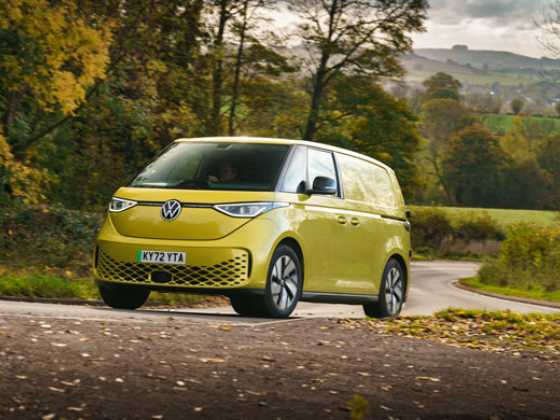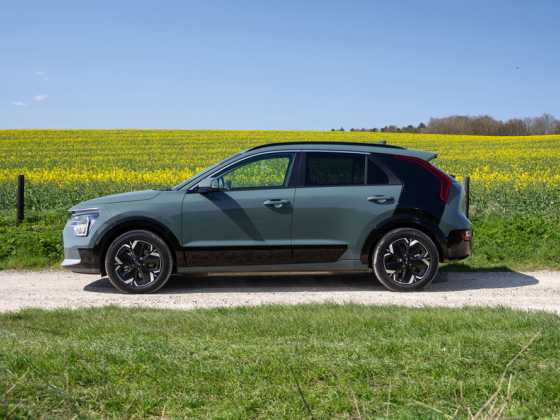A charged consignment
Electric motorcycles could be the perfect answer for urban delivery fleets wanting to cut both emissions and costs. Karl O’Sullivan takes a ride on the Vmoto E-Max 120LD+.
 Electric motorcycles are becoming an increasingly viable transport option, with battery range, charge times and performance improving rapidly. However, this may not be enough to convert most car drivers onto two wheels. These bikes are aimed at delivery fleets looking to reduce their costs as well as individuals already on two wheels who are looking for a cleaner, more efficient alternative to commuting on a petrol scooter.
Electric motorcycles are becoming an increasingly viable transport option, with battery range, charge times and performance improving rapidly. However, this may not be enough to convert most car drivers onto two wheels. These bikes are aimed at delivery fleets looking to reduce their costs as well as individuals already on two wheels who are looking for a cleaner, more efficient alternative to commuting on a petrol scooter.
At the moment, electric motorcycles are more expensive than their similar-sized petrol counterparts, but don’t let this put you off. Regular maintenance procedures are cut – giving it a clean and checking the brakes and tyre pressures are all that needs to be done.
For the fleet rider, this saves time on their daily checks: ensuring that the chain is correctly adjusted and oiled, and checking fuel and oil levels can be a messy job. For the commuter, checking levels and oily parts is the last thing you want to do before setting of to work.
Three drive modes
The Vmoto E-Max 120LD+ is an electric motorcycle fitted with a gearless direct drive rear mounted 4kW motor. Offering three drive modes, ‘Eco’, ‘Normal’ and ‘Max’, with an impressive stated maximum range of around 100 miles in ‘Normal’ mode depending on riding style and terrain. The lithium-ion LiFePO4 48V 104ah battery cells are stowed in the floor of the bike just in front of the rear wheel, keeping the weight low and centred. Surprisingly, the bike only weights 165kg, which is not too far off the petrol equivalent.
I ride around 8,000 miles per year on a 500cc motorcycle which fits my needs perfectly: good performance, with around 70mpg achieved riding on occasional short journeys. Most of my rides are around 50+ miles with large sections of motorways, so when I was handed the keys to the E-Max, it couldn’t have been any different to what I was used to. At first I was a little sceptical, it looked good, but would it feel too heavy and was it going to be slow?
Pleasurable experience
Operating the E-Max 120LD+ is pretty straight forward, just hop on, insert the key and twist the throttle. There is no clutch or gears to worry about, making this motorcycle easy to ride with little experience. Riding the E-Max felt no different to petrol scooters I’ve ridden in the past. In fact, around town it was a more pleasurable experience. A smooth quiet ride, with no vibration from sitting on an engine, and not having the hassle of stopping at a fuel station was an added bonus.
Initially I kept it in ‘Max’ mode, but soon learnt to switch it to ‘Normal’ mode in traffic or when in a 30mph zone – the maximum speed in normal mode. That’s the beauty with this machine, you can adjust the mode to suit the driving conditions, increasing the range if necessary. I didn’t bother with ‘Eco’ mode as this was just too slow, limiting the bike to around 20mph. However, if you really need the extra range and are riding in congested areas, switching to ‘Eco’ mode would eke out every possible mile from the machine.
The model on test is priced at £3,995 plus VAT, but that does include a large 450mm x 400m x 450mm rear top box with a carrying capacity of up to 150kgs. Other top boxes can be fitted depending on customer requirements. There is a small storage compartment under the seat which is suitable for a small bag, along with a luggage hook that can hold up to 3kg.
 Performance and range
Performance and range
The E-Max feels at home riding around the city, filtering through the traffic effortlessly. It is easy to park, and is free from charges in most towns and cities.
However, taking the E-Max out of its comfort zone is a little different. I managed a top speed of around 45mph on the open road, which feels fast enough on twisty B-roads, but daunting on faster A-roads. But to be fair, this is not what this bike is designed to do – I’m sure it would be easy enough to extend the top speed but this would dramatically reduce the range. Therefore, I think the balance between performance and range is spot on.
Charging the Vmoto is simple: simply pop up the seat and plug in the lead from the bike to a normal plug socket.
On a single charge I comfortably managed over 65 miles driving mostly in ‘Max’ mode at top speed and the battery still had over 15 per cent of its charge left. Range anxiety shouldn’t be a problem for most. There are plans for a rapid charger in the near future, so for fleet riders who maybe need that extra range, a quick charge in between deliveries or at lunch would suffice.
The E-Max offers a substantial scope for savings, with an average monthly commute of 15 miles per day costing around £2.20, that’s less than a penny per mile. Even compared to a petrol scooter achieving 125mpg, that’s a saving of over £120 per year. If you are tempted to swap from four wheels to two, you could save nearly £500 per year, and that’s for a relatively short journey.
Factor in the savings on tax, insurance and servicing costs, and the Vmoto really adds up. In addition to the E-Max 120LD+, Vmoto also offers the £1,830 plus VAT 37‑mile range 1kW City 80L, as well as the £3,120 plus VAT 50-mile range E-Max 120L.
Significant saving
An electric motorcycle may not be for everyone, but if you are already riding around town on two wheels, the Vmoto is definitely worth a look. Test rides can be arranged at two dealerships in London.
For an electric motorcycle of this size in this price range, the top speed and range are impressive.
If most of my journeys were around town in built-up areas, I would seriously consider swapping my petrol motorcycle for the E-Max as I would save almost £600 on fuel and servicing, and that’s based on riding just 8,000 miles per year.
For a large delivery fleet this would represent an even more significant saving.
Further information
vmoto-uk.com









